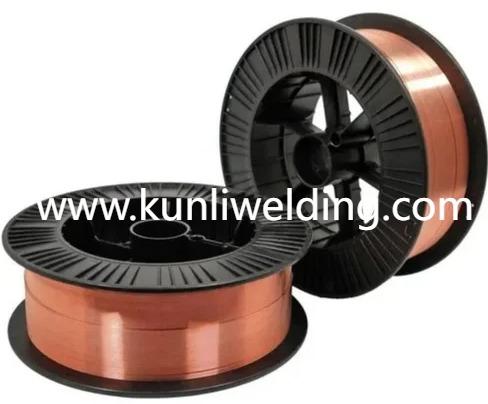How does traceability of alloy batches shorten troubleshooting and downtime

Raw material choice shapes everything that follows in wire production, and Aluminum Welding Wire Manufacturers must weigh source consistency, impurity control and alloy intent before a single spool is made. Selecting the right input metals determines how reliably a wire will feed on production lines, how the weld metal behaves in service, and how simple or costly qualification will be for fabricators.
Market shifts toward electrification and resilient infrastructure have put raw material selection in the spotlight. Buyers now expect welding consumables that behave predictably under automated feeders and in varied climates. When a manufacturer chooses feedstock with tight chemical control and consistent particle cleanliness, the downstream benefits are tangible: fewer feed interruptions, reduced porosity risk in welds, and less variation between lots that would otherwise force repeated trials.
Traceability is a practical element of raw material policy. Knowing the origin of alloy batches and holding trace records helps troubleshoot if a spool behaves unexpectedly on the line. Good traceability shortens corrective loops because quality teams can isolate suspect lots quickly and compare them against accepted samples. In a world where procurement teams juggle regional sourcing and shipping variability, the ability to trace a problem back to a supplier or batch reduces risk and preserves production schedules.
Surface condition and particle contamination in incoming ingot or billet matter more than headline chemistry. Particulates and residual films can transfer into the drawing and spooling process, showing up as inconsistent surface finish or as tiny inclusions that provoke porosity in welds. Effective manufacturers invest in cleaning and inspection steps early in the flow so that these variables are controlled before wire drawing begins. That preventive focus reduces the need for later rework and saves time on qualification.
Alloy intent must match the application. Different fabrication programs emphasize corrosion resistance, ductility, or joint strength. A wire maker that aligns input choice to end use ensures the finished product supports designer intent without forcing fabricators to compensate in process. Working closely with customers to understand the service environment and the finish plan helps manufacturers choose feedstock that produces the expected weld zone behavior.
Packaging and handling of raw material also influence final quality. Moisture or shipping contamination during storage can alter surface films and affect drawing. Manufacturers that control storage climate and that use protective packaging reduce the chance that an otherwise acceptable ingot will produce wire with feed or welding issues. Those operational practices matter when production runs must be repeatable across multiple shifts and sites.
Testing and small scale trials are essential steps after raw material selection. Drawing a short length of wire and running it through typical feeder equipment reveals feedability issues far sooner than waiting for full spool production. That trial approach lets manufacturers adjust drawing tension, winding patterns and cleaning steps until feed behavior and surface finish meet shop expectations. When trials are run early the full production run is more likely to enter the market without surprises.
Supplier relationships matter in raw material decisions. A manufacturer that sources from reliable smelters and that requires clear certificates and handling notes is more likely to maintain consistency. Open communication with upstream providers about acceptable impurity levels and packaging expectations minimizes the chance of quality drift and supports consistent spool behavior for downstream users.
Sustainability considerations are increasingly part of the raw material conversation. Recycled content and material lifecycle handling affect procurement choices, packaging and end of life plans. Manufacturers that integrate recyclable practices while controlling impurity introduce materials that meet both environmental aims and feeding requirements. That alignment helps fabricators reduce downstream waste and touch up cycles.
Ultimately the payoff of careful raw material selection is operational predictability. For fabricators, that means reels that feed smoothly, fewer qualification cycles, and welds that meet mechanical and appearance goals without excessive rework. Manufacturers that invest early in sourcing strategy, traceability and preventive testing deliver a steadier product to the market.
If you are evaluating filler wire supplies, consider asking about raw material sourcing controls, surface cleaning protocols, trial availability and traceability practices. These aspects shape how a spool will behave on your feeders and how the welded joint will perform in service. For product details and supplier handling notes consult the alloy product pages at www.kunliwelding.com .

- Art
- Causes
- Crafts
- Dance
- Drinks
- Film
- Fitness
- Food
- Giochi
- Gardening
- Health
- Home
- Literature
- Music
- Networking
- Altre informazioni
- Party
- Religion
- Shopping
- Sports
- Theater
- Wellness


